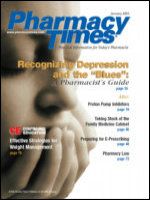Publication
Article
Pharmacy Times
Nurse Diversion in Health Facilities?Part II
Author(s):
The most egregious nurse drug diversion comes in the form of what law enforcement calls substitution. Substitution of injectables is covertly removing the controlled substance and replacing it with saline solution.
This can be done in a variety of ways, depending on the container that will be used for the injection of the drug. The usual result is that an unsuspecting nurse injects a patient in pain with saline instead of the controlled substance. Needless to say, no pain relief is attained, and the suffering patient cannot usually receive an additional dose until several hours have elapsed.
Although I fully understand addiction and all of the problems that come with it, I have little sympathy for health professionals who substitute controlled substances in health facilities. They certainly can understand the very negative consequences of their acts and should be made accountable for their actions.
A few years ago in Ohio, my office was instrumental in the testimony and passage of legislation that makes it a more serious felony violation for anyone who substitutes drugs. Furthermore, this legislation requires mandatory incarceration if a patient is harmed in any way. Although that penalty is harsh, the substitution of drugs can certainly result in patient discomfort, and in some instances even death.
Although substitution can be difficult to spot, encouraging close inspection of controlled substance
injectables can be revealing. A quick way to detect diversion is to note the liquid fill levels of vials, by comparing them with other vials to make sure that they are all the same. When syringes or vials are refilled with saline, it is difficult to replace the narcotic with the exact amount that was withdrawn. Vials found with uneven fill lines of liquid require closer inspection, with their possible return to the pharmacy.
If controlled substance ampoules do not have a familiar sound or feel when broken open, or if vials protected by a plastic cover are glued in place and do not spin, these may be signs of drug diversion.
Simple handheld refractometers costing as little as $300 can be used effectively in the pharmacy to identify liquid substances that are suspected of compromise. Most refractometers contain simple instructions that allow the pharmacist to place a drop of the liquid onto the device, and to identify substitution in most instances. There is at least 1 drug commonly used in health facilities that will not register on this equipment, however. Positive identification always requires the substance to be sent to a qualified laboratory, if needed.
It is important to remember that the pharmacist is required to report a substitution incident to the Drug Enforcement Administration (DEA), as with any other theft or loss of a controlled substance. The DEA form asks the question as to whether law enforcement has been notified of the incident. In many states, additional reporting (to regulatory boards) may be necessary to fulfill all the responsibilities of the pharmacist.
The vials that have been tampered with now become evidence and should be secured in the hopes that a meaningful law enforcement investigation will take place. It is important not to discard the vials and/or the substance that was inserted in place of the narcotic. These should follow an acceptable chain of evidence and should be turned over to law enforcement as soon as possible.
Health facility pharmacists need to work closely with nurse managers when substitution of drugs is suspected. It does little good in trying to catch the offender to announce to the entire staff that controlled substances are being compromised. Close monitoring needs to be done by the nurse manager and the pharmacy staff, so that the culprit is detected as soon as possible, and so that no patients are endangered. This monitoring usually should be coordinated with law enforcement investigators in the community.
John Burke, director of the Warren County, Ohio, drug task force and retired commander of the Cincinnati Police Pharmaceutical Diversion Squad, is a 32-year veteran of law enforcement.
For information, he can be reached by e-mail at [email protected], by phone at 513-336-0070, or via the Web site www.rxdiversion.com.

Newsletter
Stay informed on drug updates, treatment guidelines, and pharmacy practice trends—subscribe to Pharmacy Times for weekly clinical insights.






